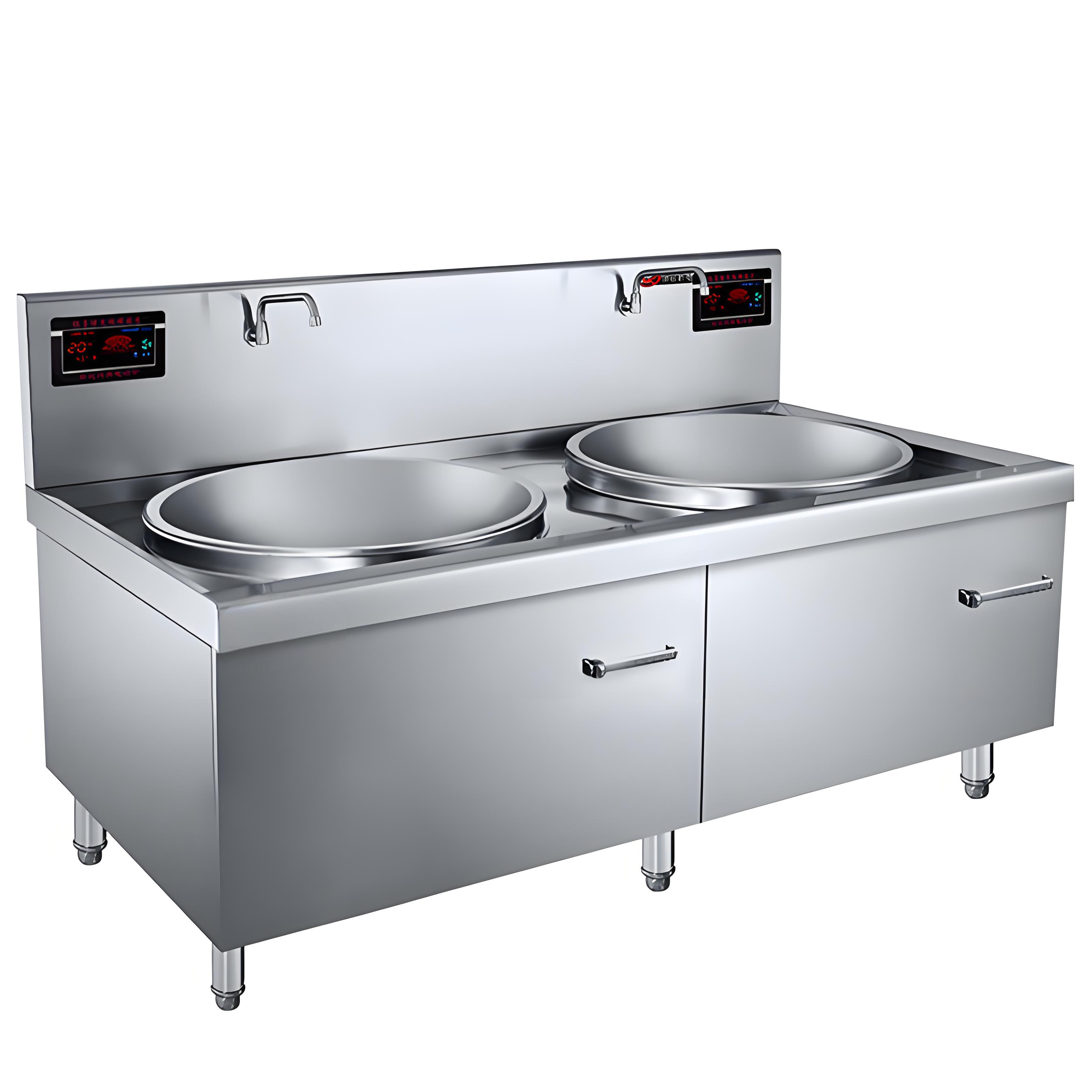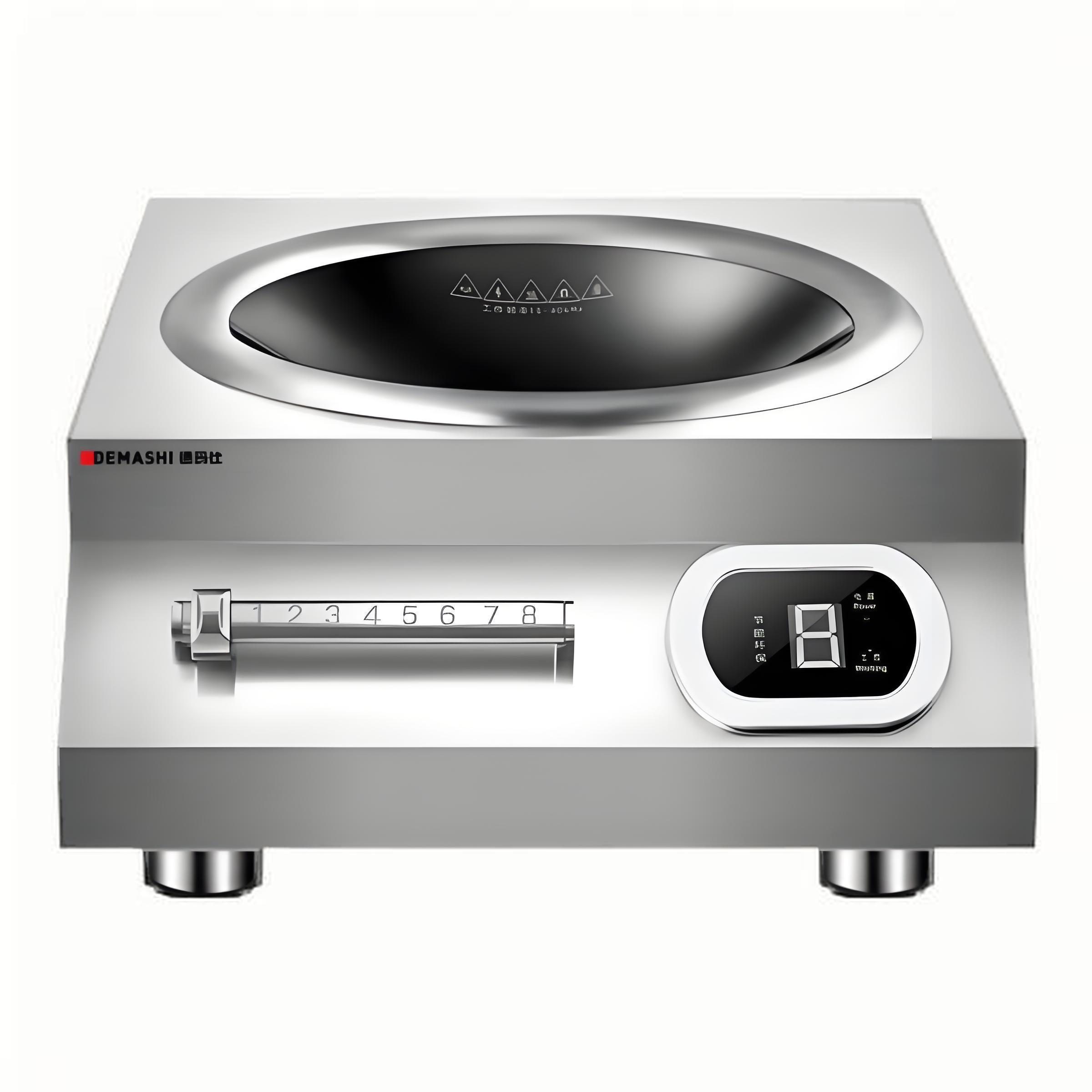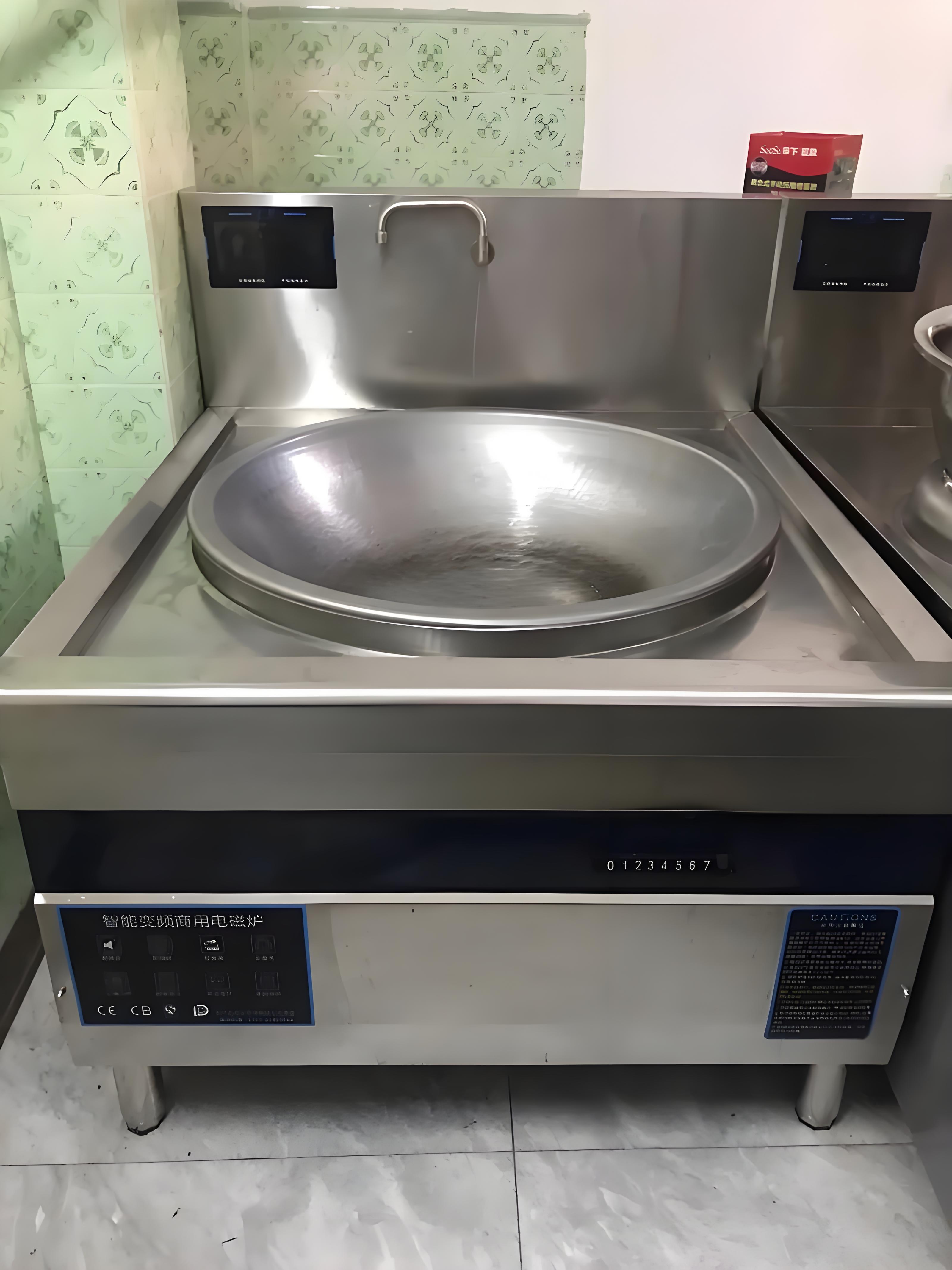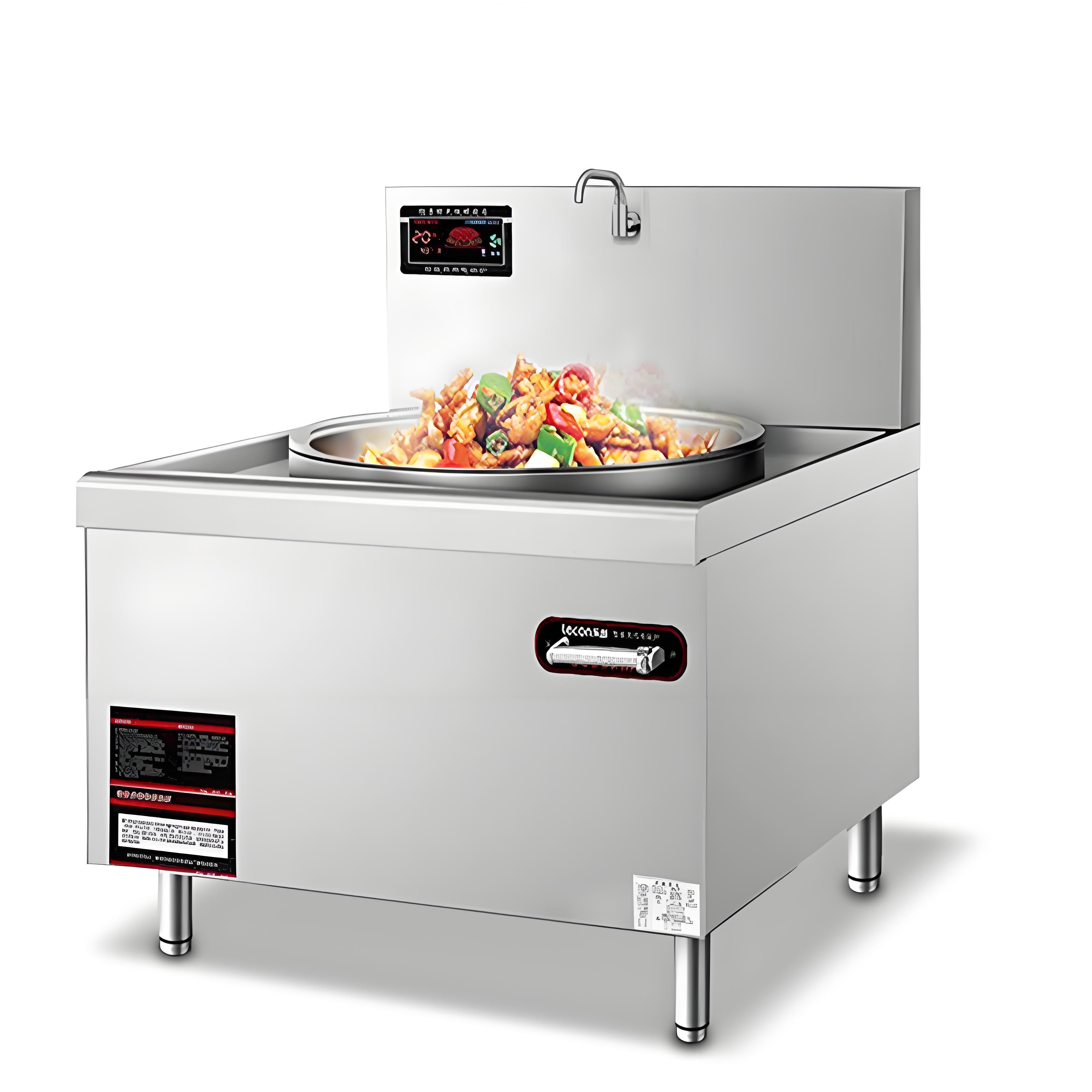As someone who has been deeply involved in the catering equipment industry for years, I understand how critical it is to select the right high-power induction cooker for a school canteen. A canteen faces the daily challenge of serving hundreds or even thousands of students, and the choice of induction cooker directly impacts cooking efficiency, food quality, operational costs, and kitchen safety. Choosing the right induction cooker means meeting the demands of peak meal times while ensuring energy efficiency, environmental friendliness, and durability. Below, I’ll share my insights based on years of experience to guide you in selecting the ideal high-power induction cooker for a school canteen, hoping to ease your decision-making process.
Why Do School Canteens Need High-Power Induction Cookers?
School canteen kitchens are vastly different from home kitchens. High meal output during peak hours, diverse menu items, and frequent operations mean that household induction cookers are simply inadequate. Commercial high-power induction cookers, typically ranging from 8kW to 30kW, can quickly heat large cookware, making them suitable for stir-frying, stewing, steaming, and more. Compared to traditional gas stoves, induction cookers are safer with no open flames and produce less kitchen fumes, improving the working environment—a critical factor for school canteens.
However, the market offers a wide variety of induction cooker models with varying power, features, and prices, making it easy to make a wrong choice. For instance, insufficient power can slow down meal preparation, affecting students’ dining experience, while poor-quality materials may lead to frequent breakdowns and high repair costs. Therefore, selecting an induction cooker requires careful consideration of the canteen’s specific needs, budget, and equipment performance.
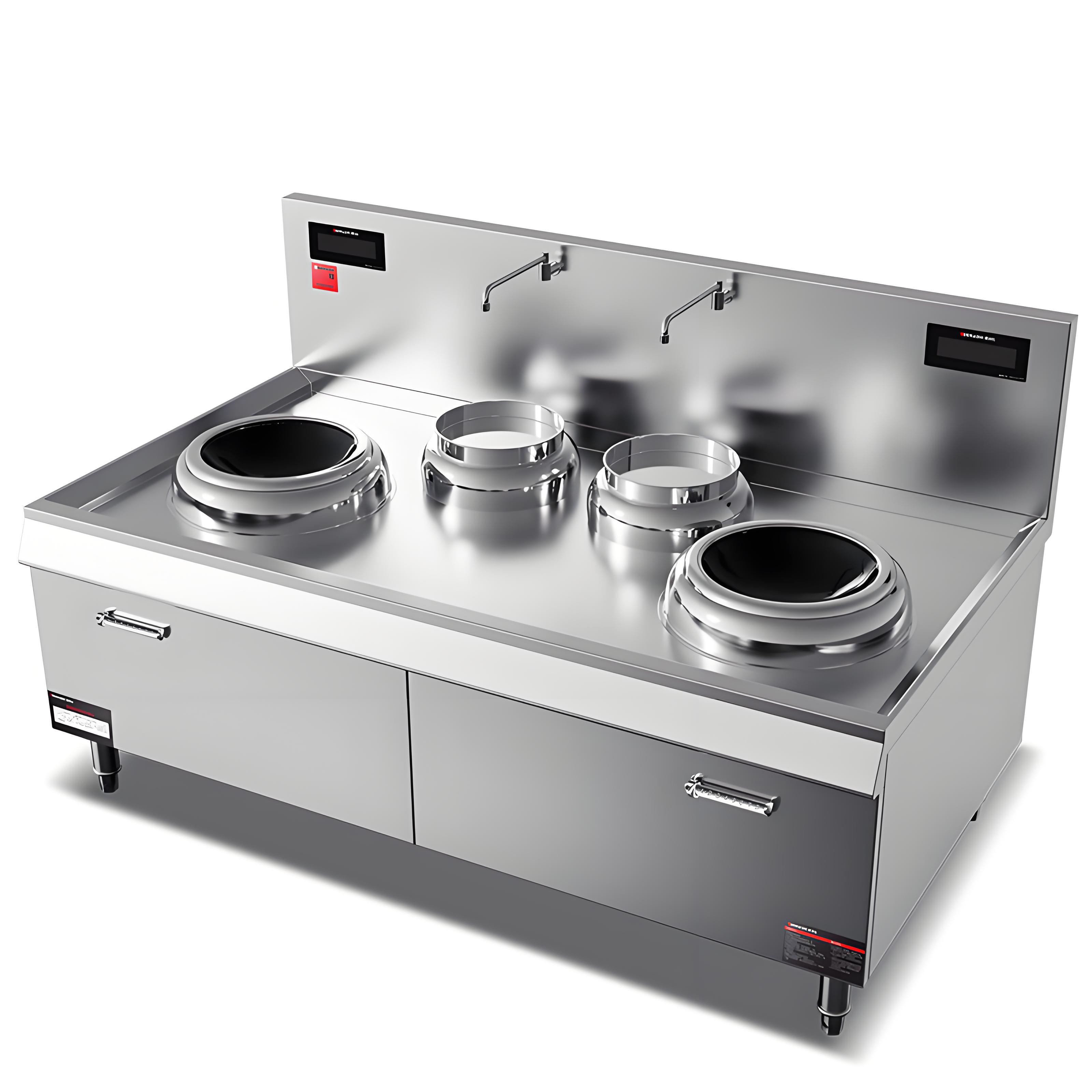
Key Factors in Choosing a High-Power Induction Cooker
To help you make an informed decision, I’ve outlined several key factors based on my experience working with canteen managers, chefs, and equipment suppliers.
1. Determine Power Requirements Based on Canteen Scale
The power of an induction cooker directly affects its heating speed and cooking efficiency. Different canteen sizes require different power levels. Generally:
Small canteens (serving 200-500 people): Opt for 8kW-12kW induction cookers, suitable for small woks or soup pots to meet daily stir-frying and stewing needs.
Medium canteens (serving 500-1000 people): Choose 15kW-20kW units to handle larger cookware and peak-hour demands.
Large canteens (serving over 1000 people): Go for 20kW-30kW or higher-powered cookers, ideal for large woks or multifunctional equipment.
For example, I once worked with a middle school canteen serving 1,200 students daily. They equipped their kitchen with two 20kW induction woks and one 15kW soup pot cooker, perfectly meeting peak demand. When selecting, consult with the chef team to estimate daily meal output and cookware size, then choose equipment based on power needs.
2. Material and Durability: Built for High-Intensity Use
School canteen induction cookers may operate for hours daily, so material durability is crucial. Here are key points to consider:
Panel Material: Prioritize microcrystalline glass panels, which are heat-resistant, impact-resistant, and easy to clean. A thickness of 4-6mm ensures long-term durability.
Body Material: Stainless steel is standard; opt for 304 stainless steel, which is corrosion-resistant and sturdy, ideal for humid kitchen environments.
Cooling System: High-power induction cookers generate significant heat, so an efficient cooling fan and proper ventilation design are essential for extending equipment lifespan.
I’ve seen a canteen choose a cheap induction cooker with a low-quality panel, only for it to crack within a year, leading to high repair costs and operational delays. Thus, don’t focus solely on price—material and craftsmanship often determine longevity.
3. Safety Features: Ensuring a Secure Kitchen
Kitchen safety in a school canteen is paramount for student health. While induction cookers are inherently safer due to no open flames, consider these details:
Overload Protection: Ensure the unit has automatic shut-off to prevent accidents from electrical overload.
Waterproof Design: Kitchens are humid, so equipment should have an IPX4 or higher waterproof rating to prevent short circuits from water splashes.
Non-Slip Base: The cooker should have a stable, non-slip base to avoid movement during operation.
According to safety standards from the State Administration for Market Regulation, commercial induction cookers must pass stringent electrical safety tests. When purchasing, check for the CCC certification (China Compulsory Certification) to ensure compliance with national safety standards.

4. Energy Efficiency: Reducing Long-Term Costs
Electricity costs are a significant part of a school canteen’s operational expenses. The energy efficiency of a high-power induction cooker directly impacts long-term costs. Here are some tips:
Choose High-Efficiency Units: Look for Level 1 energy efficiency ratings.
Smart Temperature Control: Some advanced models offer precise temperature control, adjusting power based on cooking needs to reduce waste.
Multi-Level Heat Settings: At least 8-10 heat levels allow chefs to adjust power flexibly for different dishes.
I once conducted an energy consumption test for a university canteen. A Level 1 energy-efficient 20kW induction cooker saved nearly $1,400 annually compared to a Level 3 unit. Over time, energy-efficient equipment offers significant cost savings.
5. Ease of Operation: Boosting Chef Efficiency
Canteen chefs need equipment that’s easy to use to maximize efficiency. Here are features that enhance usability:
Touch or Knob Controls: Touchscreens are responsive, but knobs are better in greasy environments—choose based on your canteen’s needs.
Preset Programs: Some cookers offer preset modes for tasks like timed stewing or stir-frying, reducing chef workload.
Easy-to-Clean Design: Flat panels and removable parts make cleaning more efficient.
I once observed a canteen where chefs struggled with a complex induction cooker, leading to frequent errors. Switching to a model with preset programs improved efficiency by at least 30%. When selecting, have chefs test the equipment to ensure intuitive operation.
6. After-Sales Service and Brand Reliability
High-power induction cookers are a significant investment, often costing thousands to tens of thousands of dollars, making after-sales service critical. Choose suppliers with:
Warranty Period: At least 1-2 years, with longer warranties for core components like IGBT modules.
Fast Repair Response: Suppliers should offer on-site repairs within 24-48 hours.
Spare Parts Availability: Ensure common parts are readily available to avoid downtime.
I’ve seen a canteen suffer losses after purchasing from a small supplier whose cooker broke down, and replacement parts were unavailable, forcing a full replacement. Opting for reputable suppliers, even if slightly more expensive, prevents such headaches.
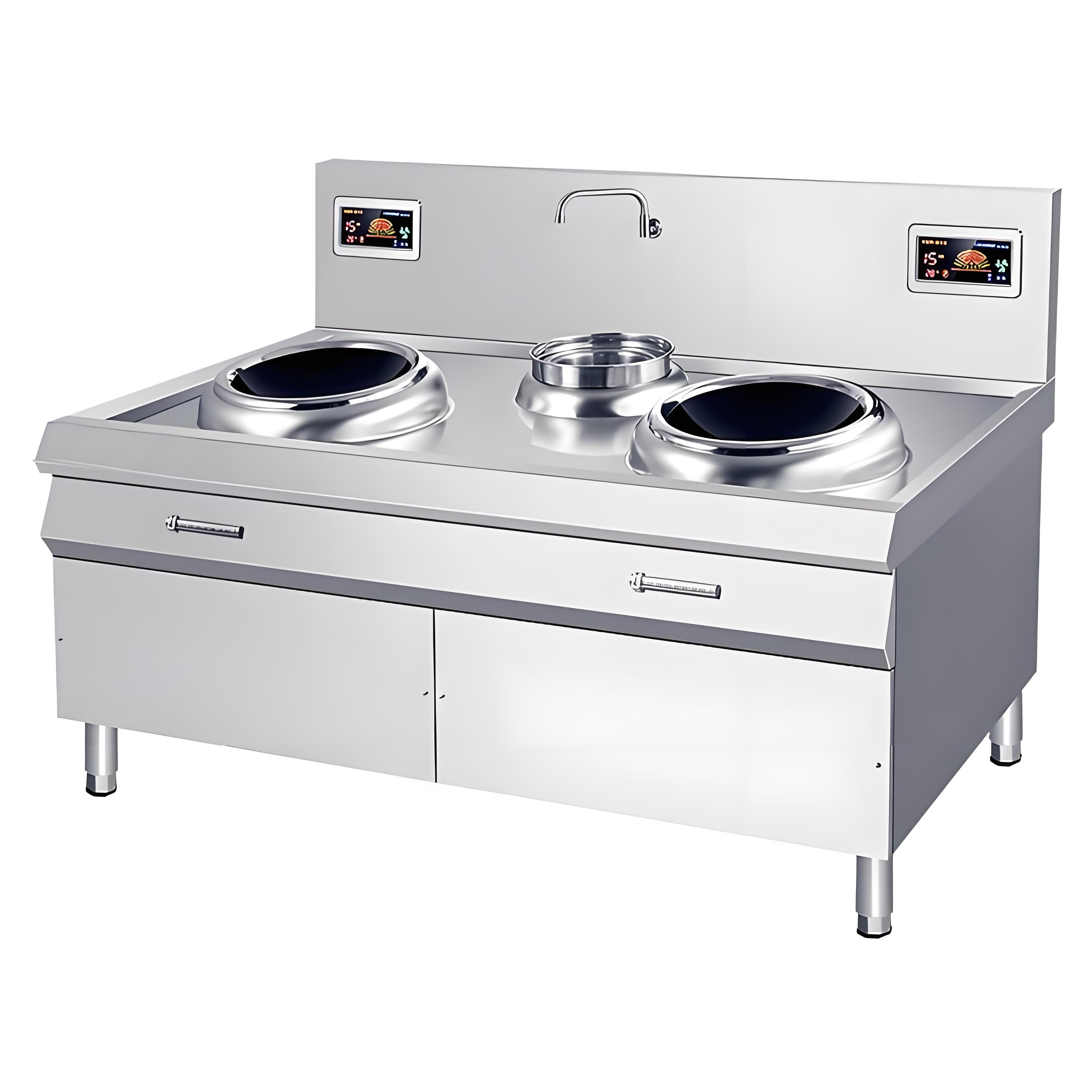
Comparison Table: Common High-Power Induction Cooker Parameters
To help you compare options, I’ve compiled a table of common induction cooker specifications based on mainstream market models:
| Parameter | Small Canteen (8-12kW) | Medium Canteen (15-20kW) | Large Canteen (20-30kW) |
|---|---|---|---|
| Suitable Scale | 200-500 people | 500-1000 people | Over 1000 people |
| Common Uses | Small woks, soup pots | Medium woks, steamers | Large woks, multifunctional |
| Panel Material | Microcrystalline glass (4mm) | Microcrystalline glass (5mm) | Microcrystalline glass (6mm) |
| Body Material | 304 stainless steel | 304 stainless steel | 304 stainless steel |
| Energy Efficiency | Level 1/2 | Level 1 | Level 1 |
| Safety Features | Overload protection, IPX4 | Overload protection, IPX4 | Overload protection, IPX6 |
| Price Range | $700-$1,400 | $1,400-$2,800 | $2,800-$5,600 |
| Recommended Use | Small schools, kindergartens | Middle schools, universities | Universities, large institutions |
Note: Prices may vary by region and supplier; always request local quotes.
Procurement Process: From Needs to Implementation
Choosing an induction cooker requires a systematic approach to avoid mistakes. Here’s my recommended process:
Needs Assessment: Consult with canteen managers and chefs to determine daily meal output, menu types, and kitchen layout.
Budget Planning: Set a price range for individual units and overall procurement based on the school’s budget.
Market Research: Compare products from multiple suppliers, focusing on power, materials, safety, and after-sales service.
On-Site Testing: Request sample units from suppliers and have chefs test them for performance and ease of use.
Contract Signing: Clearly define warranty terms, delivery timelines, and after-sales details to avoid disputes.
Installation and Training: Ensure professional installation by the supplier and provide chef training.
I once assisted a primary school canteen with procurement. Initially, they focused only on price and nearly chose a low-power unit. After on-site testing, they realized a higher-power model was far more efficient during peak hours, leading to a better choice.
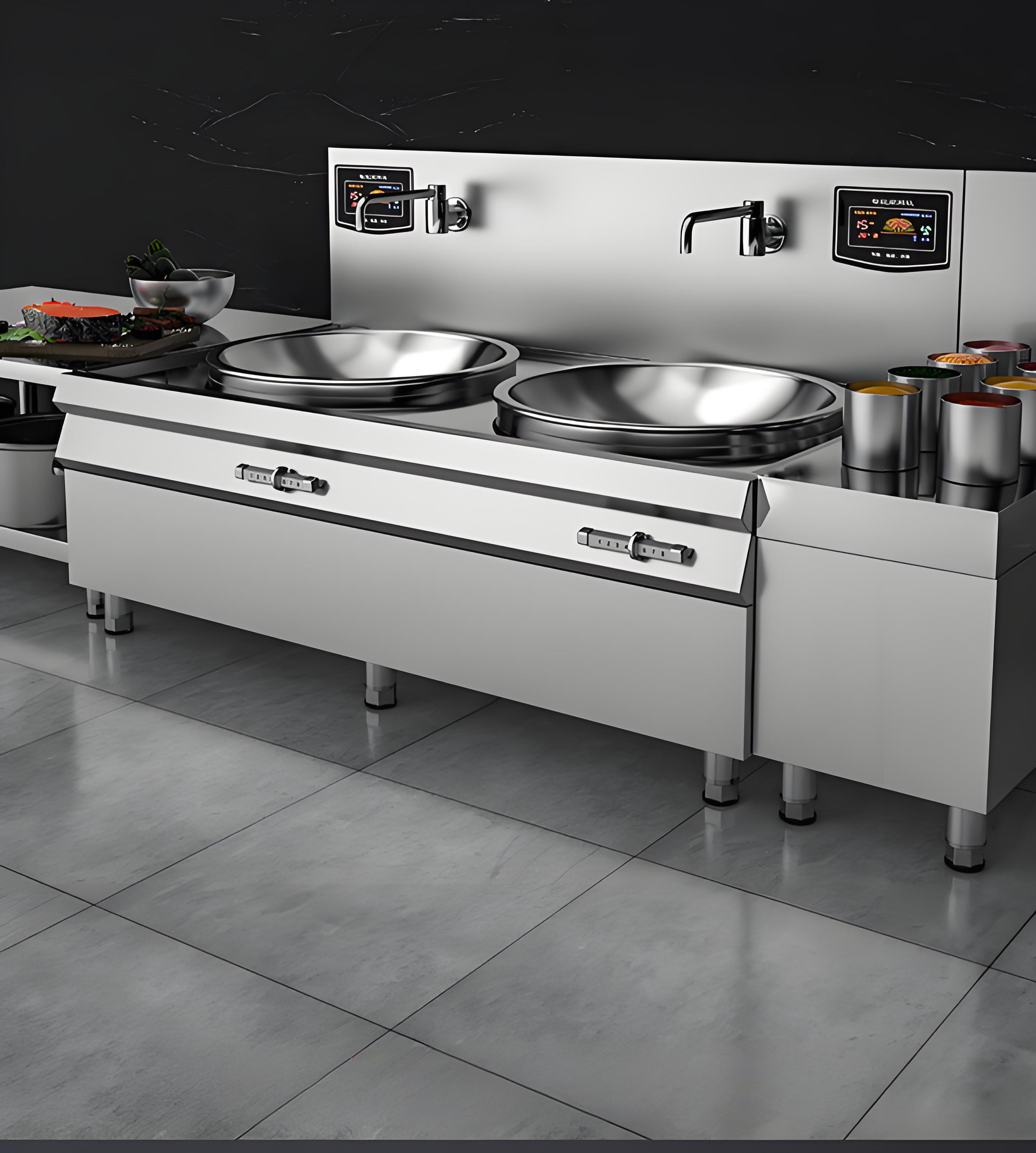
Common Pitfalls to Avoid
From my experience, here are some mistakes canteens often make during procurement:
Focusing Only on Price: Cheap units often have poor materials and high energy consumption, increasing long-term costs.
Ignoring Electrical Capacity: High-power cookers require robust electrical systems (preferably 380V three-phase power).
Overlooking Chef Input: Chefs are the primary users, and their feedback is critical for selecting suitable equipment.
Neglecting Scalability: Schools may grow, so choose equipment with power reserves for future expansion.
Real-World Case Study
Let me share a real example. A middle school canteen in a city needed to serve 1,500 students daily. They previously used gas stoves but faced issues with fumes and safety risks. The school decided to switch to induction cookers. I helped with the procurement, and we selected two 25kW induction woks and one 15kW soup pot cooker. We prioritized cooling performance and ease of use, securing a 3-year warranty. Six months later, the canteen reported a 40% increase in meal preparation efficiency, lower-than-expected electricity costs, and high chef satisfaction.
This case taught me that choosing an induction cooker isn’t just about buying equipment—it’s about optimizing kitchen operations. I hope this story inspires you.
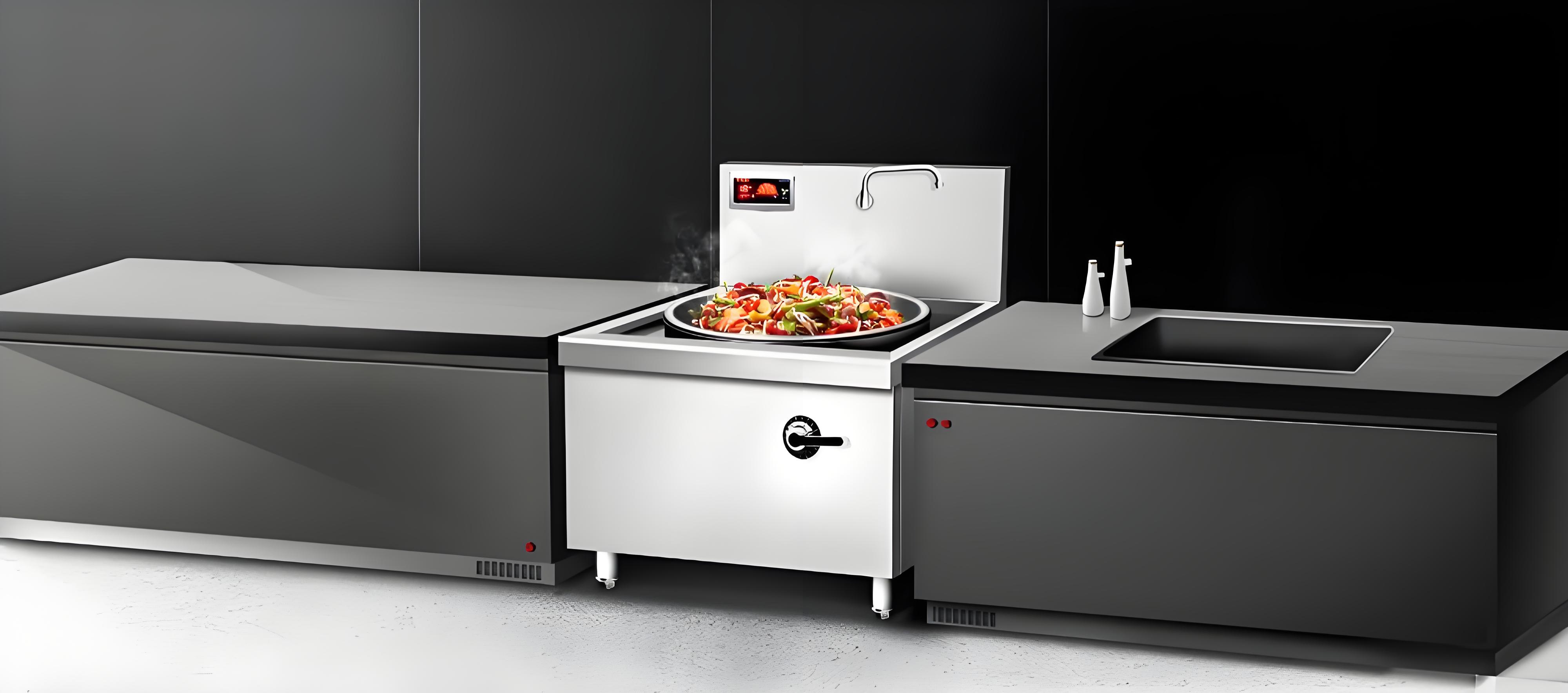
FAQs: Addressing Common Questions
Here are answers to common questions about procuring induction cookers for school canteens:
Q1: What should I consider during induction cooker installation?
A: Ensure the power supply supports 380V three-phase electricity with sufficient wire capacity (at least 10mm²). Place the cooker in a well-ventilated area, away from water and flammable materials. Have professional electricians and supplier technicians handle the installation.
Q2: Are induction cookers better than gas stoves for school canteens?
A: Induction cookers are safer with no open flames and produce no fumes, making them ideal for enclosed canteen environments. They’re also more energy-efficient long-term but require higher initial investment and robust electrical systems.
Q3: How can I judge the quality of an induction cooker?
A: Check for CCC certification, energy efficiency ratings, and material specifications. Choose reputable suppliers and request sample units for testing. Visiting the supplier’s production facility can also help assess quality.
Q4: Are maintenance costs for induction cookers high?
A: With proper use, maintenance costs are low. Regular cleaning of the panel, cooling fan, and wiring checks suffice. Choosing a supplier with strong after-sales support further reduces costs.
Q5: Will induction cookers increase electricity bills in a high-usage canteen?
A: High-power cookers consume significant electricity, but Level 1 energy-efficient models and smart temperature controls minimize waste. Off-peak preheating or stewing can further optimize costs.
Final Thoughts
Choosing the right high-power induction cooker for a school canteen can transform kitchen efficiency and ensure safe, delicious meals for students. As someone who’s seen the impact of these decisions firsthand, I know every dollar of the budget matters. I hope this guide helps you avoid pitfalls and make a choice that fits your canteen’s needs. From power and materials to after-sales service, always prioritize what works best for your kitchen. If you have questions during procurement, feel free to reach out—I’m happy to share more insights!
